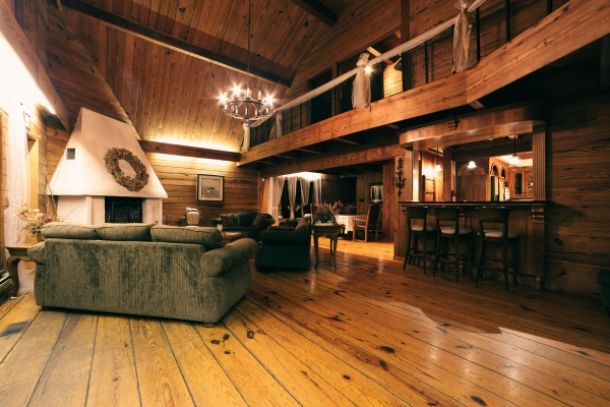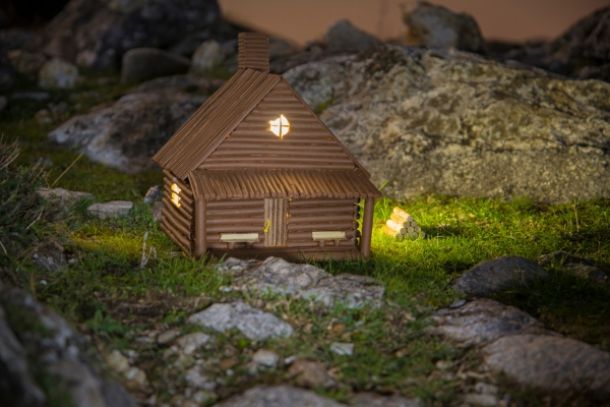Step-by-Step Guide to Constructing Wooden Houses
Step-by-Step Guide to Constructing Wooden Houses
Constructing a wooden house can seem like an overwhelming task, but breaking the process into clear, manageable steps can simplify the journey. “Step-by-Step Guide to Constructing Wooden Houses” provides a detailed roadmap for DIY enthusiasts, outlining each stage from initial planning and foundation work to framing, insulation, and finishing touches. This guide is designed to help you understand the construction process, avoid common pitfalls, and achieve a high-quality, durable wooden home.
Introduction
Wooden houses offer a blend of natural beauty and energy efficiency, making them a popular choice for DIY builders. However, building a wooden house involves multiple phases that require careful planning and precise execution. This step-by-step guide will walk you through each critical stage of the construction process, providing actionable tips and expert insights to help you construct a wooden home that is both functional and aesthetically pleasing.
Step 1: Planning and Design
Define Your Goals and Vision:
Start by outlining your vision for the wooden house. Consider the number of rooms, architectural style, and any unique features you want to include. Creating sketches, mood boards, or digital renderings can help you visualize the final product and set clear objectives for your project.
Develop Detailed Blueprints:
Accurate blueprints are the foundation of a successful construction project. Use computer-aided design (CAD) software or consult with an architect to produce detailed plans that include precise measurements, structural elements, and the layout of utilities. These blueprints serve as a roadmap, guiding you through every phase of construction and reducing the risk of costly mistakes.
Budgeting and Scheduling:
Establish a realistic budget that covers all aspects of the project, including materials, tools, permits, and contingency funds for unforeseen expenses. Break down the project into phases and set a timeline with clear milestones. Effective budgeting and scheduling are crucial for keeping your project on track and ensuring smooth progress from start to finish.
Step 2: Site Preparation and Foundation
Site Selection:
Choose a site that offers stable soil, proper drainage, and convenient access to utilities. Evaluate factors such as sunlight exposure and natural surroundings, which can influence the design and energy efficiency of your home.
Preparing the Site:
Clear the chosen site of debris, vegetation, and any obstacles. Level the ground and perform any necessary grading to ensure proper drainage. This preparation is essential to avoid issues with the foundation later on.
Laying the Foundation:
The foundation is the most critical element of your wooden house. Depending on your site conditions, decide on a foundation type—options include a concrete slab, pier and beam, or crawl space foundation. Follow the blueprint carefully: excavate the area, set forms, and pour the concrete or install the support systems as required. Allow sufficient time for curing before proceeding to the next phase.
Step 3: Framing and Structural Assembly
Constructing the Frame:
With the foundation in place, begin framing your wooden house using treated lumber for durability. The frame is the skeleton of your home and must be constructed with precision. Use modern tools like laser levels and digital measuring devices to ensure every beam and wall is perfectly aligned.
Traditional Joinery Techniques:
Incorporate traditional joinery methods—such as mortise and tenon or dovetail joints—to connect timber securely. These methods, combined with modern fasteners, provide a balance of strength and aesthetics. Precision during framing is key to preventing future structural issues.
Integrating Openings:
Plan for and construct openings for windows and doors as you frame the house. Reinforce these areas with additional supports to ensure structural integrity and proper insulation. Properly aligned and sealed openings contribute significantly to the overall energy efficiency of your home.
Step 4: Insulation, Roofing, and Utility Installation
Installing Insulation:
After framing, improve energy efficiency by installing insulation in the walls, roof, and floors. Choose eco-friendly insulation materials, such as recycled cellulose or natural wool, to reduce environmental impact and enhance comfort.
Roofing Construction:
Select a roofing system that complements your design and withstands local weather conditions. Options include wooden shingles, metal panels, or composite materials. Install the roofing material carefully to create a watertight barrier that protects the structure from moisture and temperature extremes.
Window, Door, and Utility Integration:
Install energy-efficient windows and doors, ensuring they are properly sealed to prevent drafts and moisture ingress. Plan for the integration of electrical, plumbing, and HVAC systems during this phase to avoid complications later. Proper installation of utilities is essential for a safe and functional home.
Step 5: Finishing and Personalization
Exterior Finishing:
Apply high-quality sealants, stains, or eco-friendly paints to the exterior of your wooden house. These finishes protect the wood from UV damage, moisture, and pests while enhancing its natural beauty. Regular maintenance of the exterior finish is essential to preserve the home’s appearance and longevity.
Interior Customization:
Design the interior spaces to reflect your personal style and functional needs. Consider open floor plans that maximize natural light and incorporate custom-built features such as cabinetry, exposed beams, and handcrafted details. Thoughtful interior design creates an inviting atmosphere and adds a unique touch to your home.
Step 6: Maintenance and Long-Term Care
Routine Inspections:
After construction, establish a regular maintenance schedule. Periodically inspect the structure for signs of wear, moisture damage, or pest infestations. Early detection of issues can prevent minor problems from escalating into major repairs.
Seasonal Upkeep:
Implement seasonal tasks such as cleaning gutters, resealing exterior surfaces, and checking roofing materials after extreme weather. Consistent upkeep preserves both the energy efficiency and aesthetic appeal of your wooden house over time.
Conclusion
The step-by-step guide to constructing wooden houses provides a comprehensive roadmap for DIY builders. By breaking the project into manageable phases—from planning and site preparation to framing, insulation, and finishing—you can tackle each challenge methodically and achieve a durable, energy-efficient home. Embrace the process with attention to detail, and let each phase of construction build your confidence and expertise. With careful planning, quality materials, and continuous maintenance, your wooden house will stand as a lasting testament to your dedication and craftsmanship.


